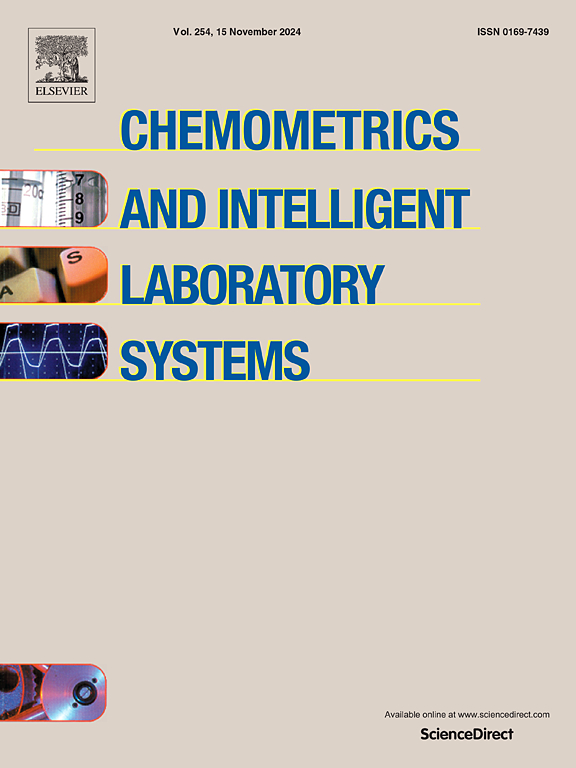LTFM:采用松散耦合策略的矿物光谱识别长尾少拍模块
IF 3.7
2区 化学
Q2 AUTOMATION & CONTROL SYSTEMS
Chemometrics and Intelligent Laboratory Systems
Pub Date : 2024-10-15
DOI:10.1016/j.chemolab.2024.105247
引用次数: 0
摘要
近年来,与支持向量机(SVM)和偏最小二乘法(PLS)等传统机器学习方法相比,深度学习方法在矿物识别方面表现出更优越的性能。然而,由于矿石分布的不一致性和多种天然矿物的稀缺性,几乎所有这些深度学习方法都更注重网络结构的改进和设计,而忽视了光谱数据中的长尾分布现象。为了减轻多数类别对少数类别的干扰,我们提出了长尾少拍模块(LTFM),其灵感来自于对时下流行的解耦策略的反思,即在矿物光谱数据上进行初级表示学习和进一步的分类器再训练。具体而言,LTFM 是一种多专家模式,这些专家分别擅长改进特征表征学习、减轻长尾效应和缓解少镜头干扰。此外,LTFM 还引入了松耦合学习策略,以促进主要表征学习和后续附加专家对这些知识的继承。在两个公开的光谱数据集上进行的实验表明,所提出的 LTFM 明显优于现有方法。最后,我们还进行了广泛的消融研究,以调查我们建议的有效性、正确性和鲁棒性。本文章由计算机程序翻译,如有差异,请以英文原文为准。
LTFM: Long-tail few-shot module with loose coupling strategy for mineral spectral identification
In recent years, deep learning methods have exhibited superior performance in mineral identification when especially compared with conventional machine learning methods such as Support Vector Machine (SVM) and Partial Least Squares (PLS). Nevertheless, almost all of these deep learning methods pay more attention to improving and designing network structures, while neglecting the phenomenon of long-tail distribution in spectral data due to the inconsistency of ore distribution and the scarcity of several natural minerals. To alleviate the interference of majority categories on minority categories, we propose Long-Tail Few-shot Module (LTFM) which is inspired by rethinking the fashionable decoupling strategy that conducts primary representation learning and further classifier retrained on mineral spectral data. In particular, LTFM serves as a multi-expert mode, where these experts are respectively specialized in improving feature representation learning, mitigating the long-tail effect, and alleviating the interference of few shots. Additionally, the loose coupling learning strategy is introduced to facilitate primary representation learning and the subsequent additional experts to inherit this knowledge. Experiments on two publicly available spectral datasets show that the proposed LTFM significantly outperforms existing methods. In the end, extensive ablation studies are conducted to investigate the effectiveness, correctness, and robustness of our proposal.
求助全文
通过发布文献求助,成功后即可免费获取论文全文。
去求助
来源期刊
CiteScore
7.50
自引率
7.70%
发文量
169
审稿时长
3.4 months
期刊介绍:
Chemometrics and Intelligent Laboratory Systems publishes original research papers, short communications, reviews, tutorials and Original Software Publications reporting on development of novel statistical, mathematical, or computer techniques in Chemistry and related disciplines.
Chemometrics is the chemical discipline that uses mathematical and statistical methods to design or select optimal procedures and experiments, and to provide maximum chemical information by analysing chemical data.
The journal deals with the following topics:
1) Development of new statistical, mathematical and chemometrical methods for Chemistry and related fields (Environmental Chemistry, Biochemistry, Toxicology, System Biology, -Omics, etc.)
2) Novel applications of chemometrics to all branches of Chemistry and related fields (typical domains of interest are: process data analysis, experimental design, data mining, signal processing, supervised modelling, decision making, robust statistics, mixture analysis, multivariate calibration etc.) Routine applications of established chemometrical techniques will not be considered.
3) Development of new software that provides novel tools or truly advances the use of chemometrical methods.
4) Well characterized data sets to test performance for the new methods and software.
The journal complies with International Committee of Medical Journal Editors'' Uniform requirements for manuscripts.

 求助内容:
求助内容: 应助结果提醒方式:
应助结果提醒方式:


